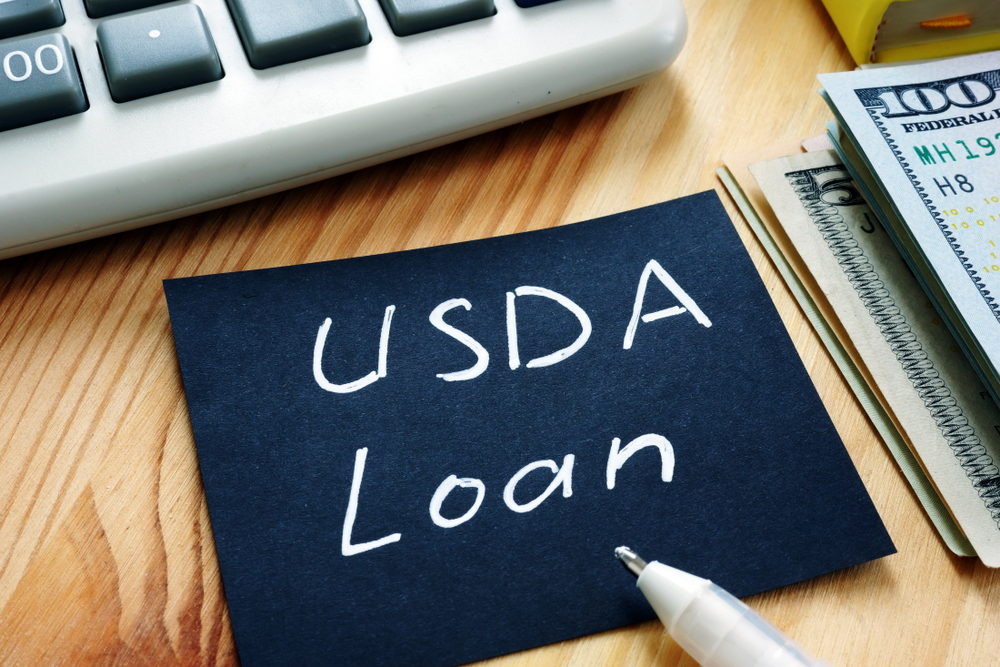
Are you a first-time homebuyer dreaming of owning a piece of rural America? The United States Department of Agriculture (USDA) mortgage loan program might be your ticket to homeownership. In this comprehensive guide, we’ll explore everything you need to know about USDA loans, from eligibility requirements to application processes, and help you determine if this path is right for you.
What Are USDA Mortgage Loans?
USDA mortgage loans are government-backed loans designed to help low to moderate-income individuals and families purchase homes in rural and suburban areas. These loans offer several attractive features, including:
- No down payment required
- Competitive interest rates
- Flexible credit requirements
- Reduced mortgage insurance premiums
The USDA loan program aims to promote homeownership and economic development in rural areas across the United States. Let’s dive deeper into the specifics of this program and how it can benefit first-time homebuyers.
Eligibility Requirements for USDA Loans
To qualify for a USDA mortgage loan, you must meet certain criteria:
- Income Limits: Your household income must not exceed 115% of the median income for the area where you plan to purchase a home. You can check your eligibility using the USDA Income Eligibility Calculator.
- Property Location: The home must be located in an eligible rural area as defined by the USDA. You can verify property eligibility using the USDA Property Eligibility Map.
- U.S. Citizenship or Permanent Residency: Applicants must be U.S. citizens, non-citizen nationals, or qualified aliens.
- Credit Score: While there’s no strict minimum credit score requirement, most lenders prefer a score of at least 640. However, those with lower scores may still qualify with compensating factors.
- Debt-to-Income Ratio: Your total monthly debt payments should not exceed 41% of your monthly income, although exceptions can be made in some cases.
- Primary Residence: The property must be your primary residence, not a vacation home or investment property.
Types of USDA Mortgage Loans
The USDA offers three main types of mortgage loans:
- USDA Direct Loans: These loans are issued directly by the USDA and are designed for very low and low-income borrowers.
- USDA Guaranteed Loans: These loans are issued by approved lenders and guaranteed by the USDA. They’re available to low and moderate-income borrowers.
- USDA Home Improvement Loans and Grants: These are available to help homeowners repair or improve their existing homes.
For the purposes of this article, we’ll focus primarily on USDA Guaranteed Loans, as they are the most common option for first-time homebuyers.
The USDA Loan Application Process
Applying for a USDA mortgage loan involves several steps:
- Check Your Eligibility: Use the USDA’s online tools to verify your income and property eligibility.
- Find a USDA-Approved Lender: Not all lenders offer USDA loans. You can find approved lenders on the USDA Rural Development website.
- Get Pre-Approved: Submit your financial information to the lender for pre-approval. This will give you an idea of how much you can borrow.
- Find a Home: Look for homes in USDA-eligible areas that meet your needs and budget.
- Submit Your Loan Application: Once you’ve found a home, submit your full loan application to the lender.
- Underwriting: The lender will review your application and verify all information.
- USDA Approval: The USDA must review and approve your application.
- Closing: If approved, you’ll attend a closing meeting to sign final documents and receive your keys.
Advantages of USDA Mortgage Loans
USDA loans offer several benefits that make them attractive to first-time homebuyers:
- No Down Payment: This can significantly reduce the upfront costs of homeownership.
- Competitive Interest Rates: USDA loans often have lower interest rates compared to conventional mortgages.
- Lower Mortgage Insurance: The annual mortgage insurance premium for USDA loans is typically lower than for FHA loans.
- Flexible Credit Requirements: Borrowers with less-than-perfect credit may still qualify.
- Closing Cost Assistance: Some sellers or lenders may offer to pay closing costs.
Comparison: USDA Loans vs. Other Mortgage Options
To help you understand how USDA loans stack up against other mortgage options, here’s a comprehensive comparison table:
| Feature | USDA Loan | FHA Loan | Conventional Loan | VA Loan |
|---|---|---|---|---|
| Minimum Down Payment | 0% | 3.5% | 3-20% | 0% |
| Mortgage Insurance | Required (Lower than FHA) | Required | Required if <20% down | Not Required |
| Credit Score Minimum | No set minimum (640 preferred) | 580 | 620 | No set minimum |
| Debt-to-Income Ratio | 41% (can be higher with compensating factors) | 43% | 36-43% | 41% |
| Property Location Restrictions | Rural areas only | No restrictions | No restrictions | No restrictions |
| Income Limits | Yes | No | No | No |
| First-Time Homebuyer Requirement | No | No | No | No |
| Loan Limits | Varies by county | Varies by county | $548,250 – $822,375 (2021) | No limit |
Tips for a Successful USDA Loan Application
- Check and improve your credit score: While USDA loans have flexible credit requirements, a higher score can help you secure better terms.
- Save for closing costs: Even though you don’t need a down payment, you’ll still need to cover closing costs.
- Gather necessary documents: Have your financial documents ready, including tax returns, pay stubs, and bank statements.
- Don’t make major financial changes: Avoid changing jobs or making large purchases during the application process.
- Be patient: The USDA loan process can take longer than conventional loans due to the additional approval step.
Real-Life Success Stories
To give you a better idea of how USDA loans have helped first-time homebuyers, here are a couple of success stories:
“As a teacher in rural Montana, I never thought I’d be able to afford a home. Thanks to the USDA loan program, I was able to purchase a charming 3-bedroom house with no down payment. The process took a bit longer than I expected, but it was worth the wait!” – Sarah T., Bozeman, MT
“My wife and I were renting a small apartment and struggling to save for a down payment. We learned about USDA loans from a local real estate agent and were thrilled to discover we qualified. Now we’re homeowners with a mortgage payment that’s less than our old rent!” – Michael and Lisa R., Greenville, SC
These stories highlight the real impact USDA loans can have on individuals and families looking to achieve the dream of homeownership.
Frequently Asked Questions
To address some common concerns about USDA mortgage loans, here are the five most frequently asked questions:
- Q: Can I use a USDA loan to buy a fixer-upper?
A: Yes, you can use a USDA loan to purchase a home that needs repairs. The USDA even offers a program called the Section 502 Direct Loan Program that allows you to finance both the purchase and renovation of a home. - Q: How long does the USDA loan process take?
A: The USDA loan process typically takes 30-60 days, which is slightly longer than conventional loans due to the additional USDA approval step. - Q: Can I refinance my current mortgage into a USDA loan?
A: Yes, the USDA offers a refinance program for both USDA and non-USDA loans, subject to eligibility requirements. - Q: Are manufactured homes eligible for USDA loans?
A: Yes, manufactured homes can be eligible for USDA loans if they meet certain criteria, including being permanently affixed to a foundation. - Q: Can I get a USDA loan if I’m not a first-time homebuyer?
A: Yes, the USDA loan program is not limited to first-time homebuyers. However, you cannot own another home at the time of closing on your USDA loan.
Final Thoughts and Recommendations
USDA mortgage loans can be an excellent option for first-time homebuyers looking to purchase property in rural or suburban areas. They offer significant benefits, particularly the zero down payment requirement, which can make homeownership accessible to those who might otherwise struggle to save for a large down payment.
However, it’s important to carefully consider your long-term financial goals and current situation before committing to any mortgage. Here are some final recommendations:
- Do your research: Thoroughly understand the USDA loan program and compare it with other mortgage options.
- Consult with a housing counselor: The Department of Housing and Urban Development (HUD) offers free or low-cost housing counseling services.
- Shop around for lenders: Different lenders may offer varying interest rates and terms, so it pays to compare options.
- Consider your future plans: If you think you might move in the near future, consider how long you need to stay in the home to recoup closing costs and build equity.
- Be realistic about homeownership costs: Remember to factor in expenses like property taxes, insurance, maintenance, and repairs when budgeting for your new home.
By carefully considering these factors and leveraging the benefits of USDA mortgage loans, you can make an informed decision about your path to homeownership. Remember, buying a home is a significant financial commitment, but with the right preparation and support, it can also be an incredibly rewarding experience.
For more information about USDA mortgage loans and other homebuying resources, visit the official USDA Rural Development website or speak with a HUD-approved housing counselor in your area.
Happy house hunting!







